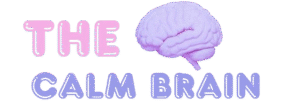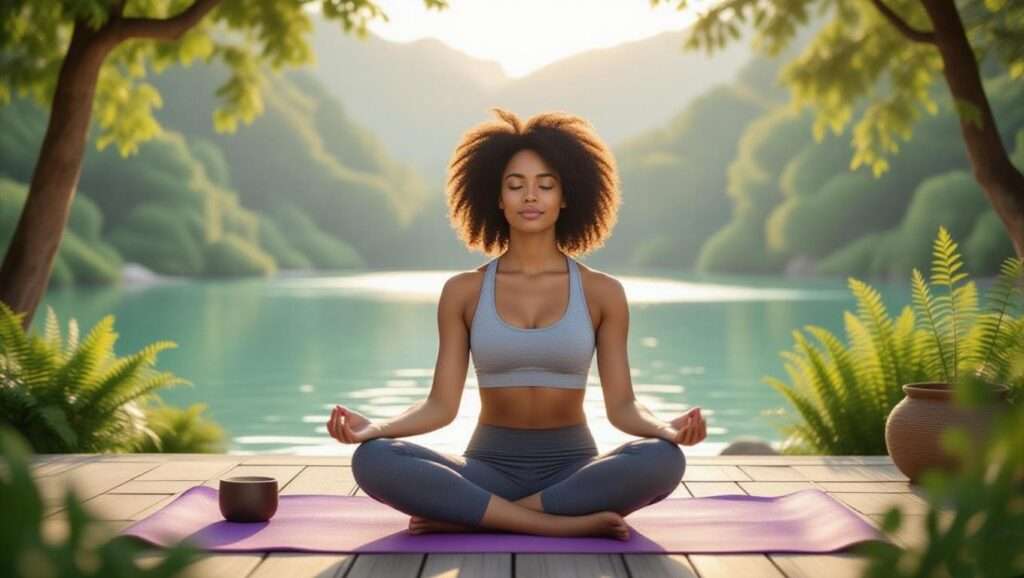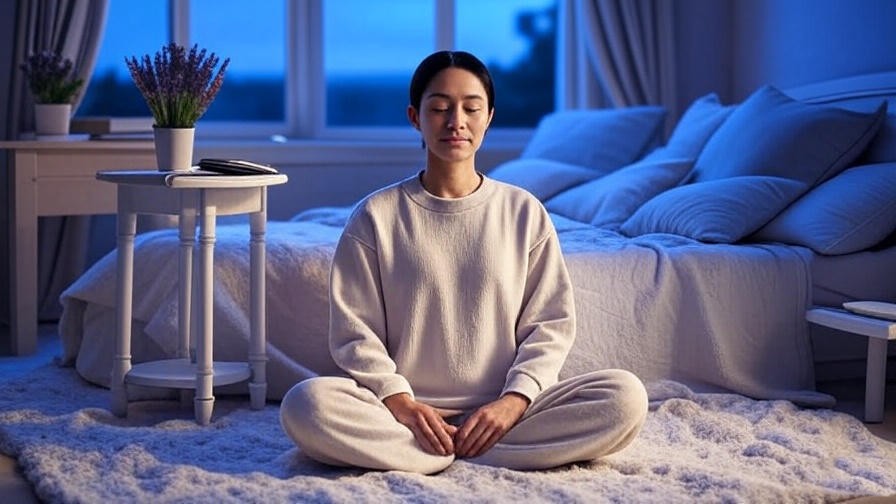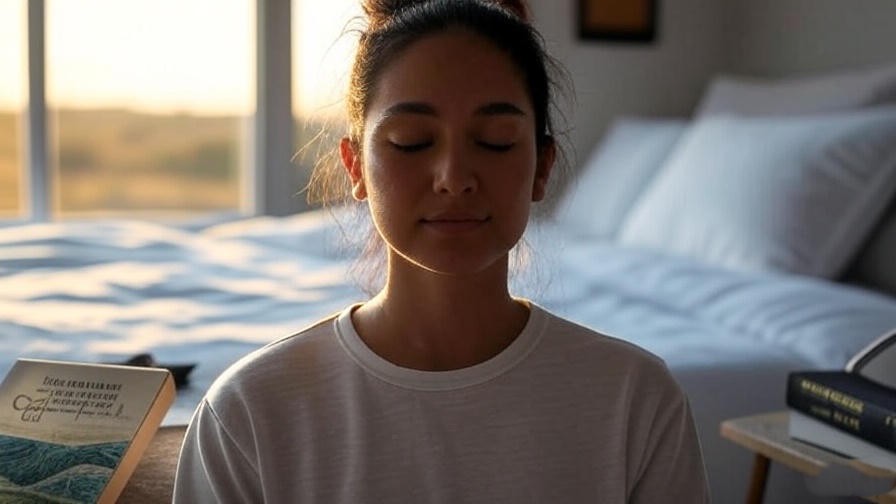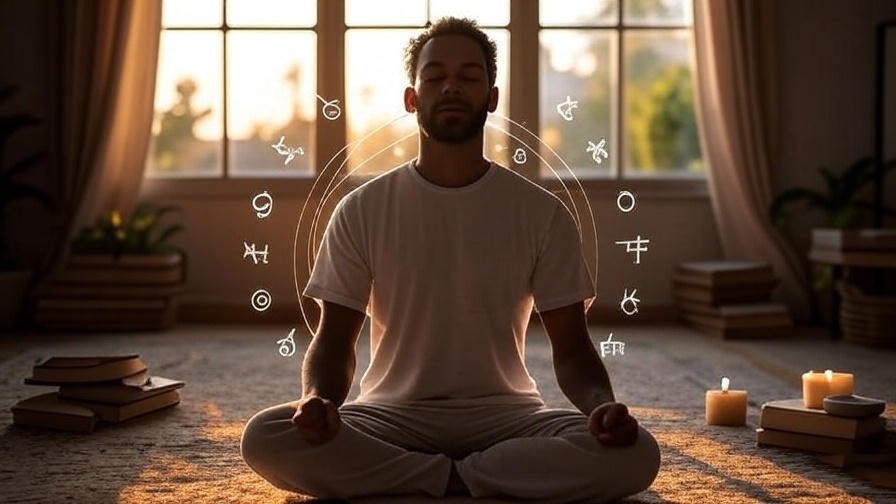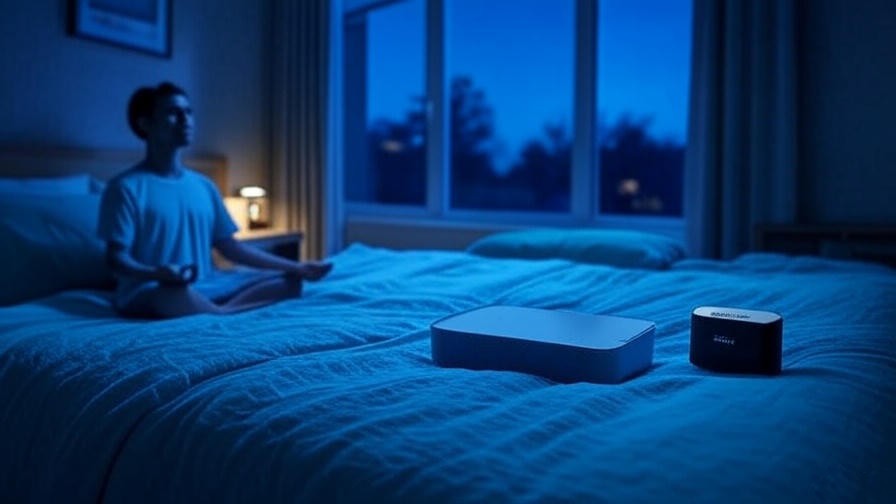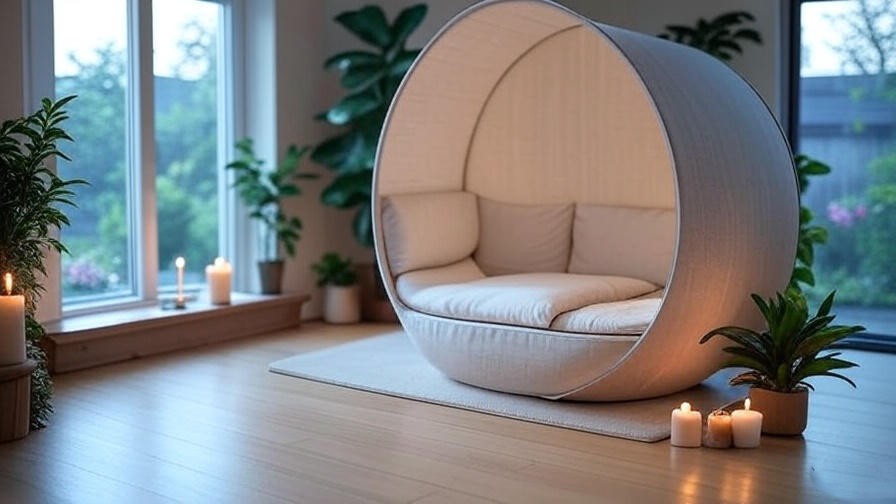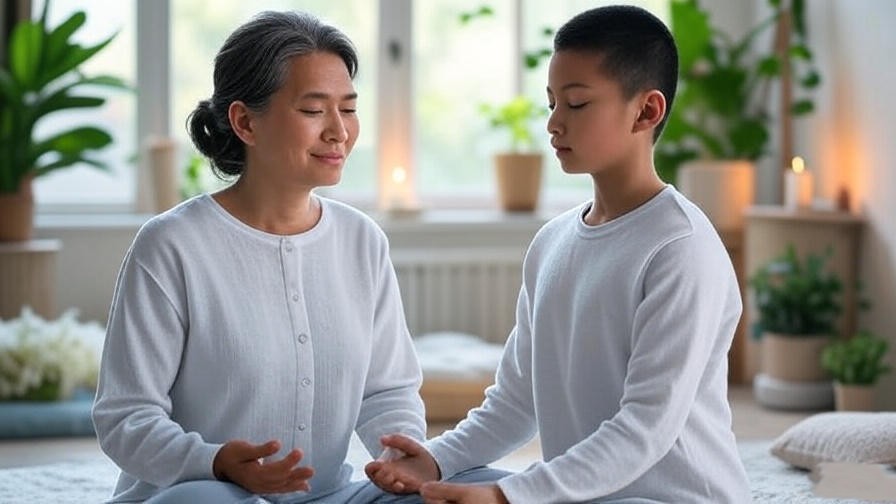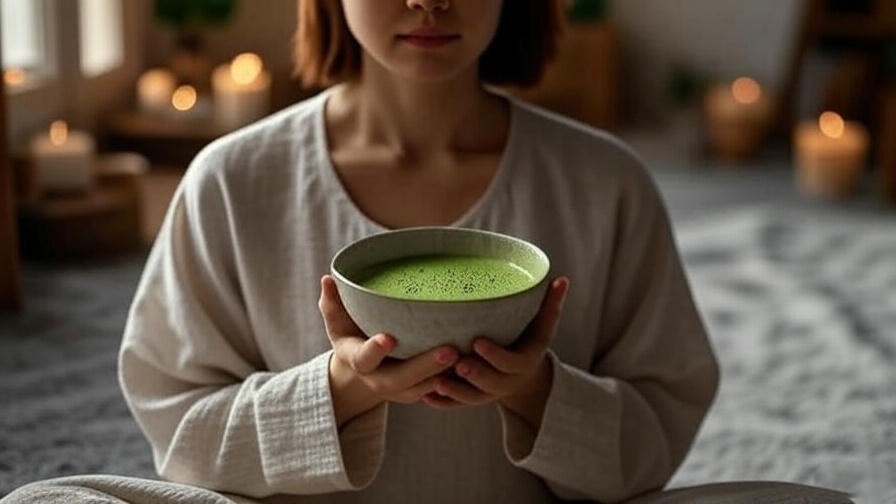Picture this: it’s 7 PM, you’re stuck in traffic after a long workday, your mind is racing with to-do lists, and stress feels like an unwelcome passenger. Sound familiar? In today’s fast-paced world, finding calm can feel impossible, yet millions are turning to meditation and yoga to reclaim their peace. Our Meditation and Yoga PDF Guide is your ticket to stress relief, better sleep, and holistic well-being. Designed by certified wellness experts, this downloadable resource simplifies mindfulness and movement, offering step-by-step routines for all levels. In this article, we’ll explore why these practices are essential, what makes our guide unique, and how you can transform your life with just a few minutes a day.
As a certified yoga instructor and mindfulness coach with over a decade of experience, I’ve seen firsthand how meditation and yoga can reduce anxiety, improve focus, and foster emotional balance. Backed by science and tailored for busy lifestyles, this guide is your roadmap to inner peace. Let’s dive into why these practices are game-changers and how our PDF makes them accessible to everyone.
Why Meditation and Yoga Are Essential for Modern Life
The Science Behind Meditation and Yoga
Meditation and yoga aren’t just trendy buzzwords—they’re evidence-based practices with profound benefits. A 2018 study in The Lancet found that mindfulness meditation reduces cortisol levels by up to 25%, easing stress and improving mental clarity. Similarly, a 2020 Journal of Clinical Psychology review showed yoga improves sleep quality and reduces symptoms of anxiety and depression. Together, these practices enhance brain function, lower blood pressure, and promote emotional resilience.
Meditation calms the mind by activating the parasympathetic nervous system, while yoga combines movement and breath to release physical tension. This synergy creates a holistic approach to well-being, addressing both mental and physical health. Whether you’re battling work stress or seeking better sleep, these practices offer measurable results.
Common Challenges in Starting a Practice
Starting a meditation or yoga practice can feel daunting. Many beginners worry about finding time, mastering techniques, or sitting still with a racing mind. Others feel overwhelmed by the sheer variety of styles—Hatha, Vinyasa, mindfulness, or transcendental meditation. Physical limitations or lack of equipment can also deter people from trying yoga.
Our Meditation and Yoga PDF Guide solves these challenges by offering clear, beginner-friendly instructions and time-efficient routines. Whether you have 10 minutes or an hour, the guide adapts to your schedule and skill level, making wellness achievable for everyone.
What to Expect from the Meditation and Yoga PDF Guide
Key Features of the Guide
Our Meditation and Yoga PDF Guide is a comprehensive resource designed for accessibility and impact. It includes:
- Step-by-Step Instructions: Clear guidance on meditation techniques and yoga poses, with modifications for all fitness levels.
- Visual Aids: Diagrams and photos to ensure proper form and alignment.
- Customizable Routines: Options for 10-, 20-, or 30-minute sessions to fit your lifestyle.
- Printable Format: Download and print for easy access at home, work, or on the go.
This guide is perfect for beginners curious about mindfulness, intermediates refining their practice, or advanced practitioners seeking new routines. It’s a one-stop resource for stress relief and holistic health.
How the Guide Addresses Your Needs
The guide is tailored to solve real problems: chronic stress, poor sleep, and emotional overwhelm. It offers quick sessions for busy professionals, gentle poses for those with physical limitations, and advanced techniques for seasoned practitioners. For example, a 10-minute morning meditation can set a calm tone for your day, while a 15-minute evening yoga flow can ease you into restful sleep. With options for every goal—whether it’s anxiety reduction or improved flexibility—the guide empowers you to take control of your well-being.
Building Your Meditation Practice
Getting Started with Meditation

Meditation is about training your mind to focus and find calm. You don’t need fancy equipment or hours of free time—just a quiet space and a few minutes. Here’s a simple 5-minute meditation to try today:
- Find a Comfortable Position: Sit cross-legged or on a chair with your back straight.
- Focus on Your Breath: Inhale deeply through your nose for 4 seconds, hold for 4, and exhale for 6.
- Notice Your Thoughts: If your mind wanders, gently bring it back to your breath.
- End with Gratitude: Reflect on one thing you’re thankful for before opening your eyes.
This technique, included in our PDF guide, is perfect for beginners and sets the foundation for deeper mindfulness.
Common Meditation Techniques
The guide covers three core techniques:
- Mindfulness Meditation: Focus on the present moment, observing thoughts without judgment. Try this: spend 3 minutes noticing the sensation of your breath at the tip of your nose.
- Body Scan: Progressively relax each part of your body, ideal for stress relief. Start at your toes and work up to your head, releasing tension as you go.
- Loving-Kindness Meditation: Cultivate compassion by silently repeating phrases like, “May I be happy, may I be healthy.” Extend these wishes to others for emotional healing.
Each technique is detailed in the PDF with guided scripts to make practice effortless.
Overcoming Meditation Challenges
A wandering mind is normal—don’t get discouraged! If you struggle to focus, try a guided meditation audio (many free apps are available) or set a timer to stay on track. Lack of motivation? Start with just 2 minutes a day and gradually increase. The PDF guide includes a progress tracker to celebrate small wins, keeping you motivated. As a mindfulness coach, I recommend journaling your thoughts post-meditation to notice patterns and growth over time.
Mastering Yoga for Mind and Body
Yoga Poses for Stress Relief
Yoga pairs movement with breath to release physical and mental tension. Here are three beginner-friendly poses from the PDF guide:
- Child’s Pose (Balasana): Kneel, sit back on your heels, and stretch your arms forward, resting your forehead on the ground. This pose calms the nervous system and relieves lower back tension.
- Cat-Cow Pose: On all fours, alternate between arching your back (Cow) and rounding it (Cat). This flow improves spinal flexibility and reduces stress.
- Savasana (Corpse Pose): Lie flat on your back, arms relaxed, and focus on deep breathing. Perfect for relaxation and sleep prep.
Modifications, like using a chair for Cat-Cow, ensure accessibility for all.
Creating a Balanced Yoga Routine
A balanced yoga routine combines strength, flexibility, and relaxation. Here’s a 15-minute flow from the PDF guide:
- Warm-Up (3 minutes): Gentle neck rolls and seated stretches.
- Main Sequence (10 minutes): Cat-Cow, Downward Dog, and Warrior II for strength and balance.
- Cool-Down (2 minutes): Child’s Pose and Savasana for relaxation.
Incorporate pranayama (breathwork), like alternate nostril breathing, to enhance calm. The guide provides multiple routines tailored to your goals, from energy boosts to bedtime relaxation.
Yoga for Specific Goals
- For Sleep: Try restorative poses like Legs-Up-the-Wall to calm the nervous system.
- For Anxiety: Practice grounding poses like Tree Pose to foster stability.
- For Flexibility: Include forward folds and hip openers to release tight muscles.
Certified yoga instructors contributed to the guide, ensuring each routine is safe and effective.
How to Use the Meditation and Yoga PDF Guide Effectively
Setting Up Your Practice Space
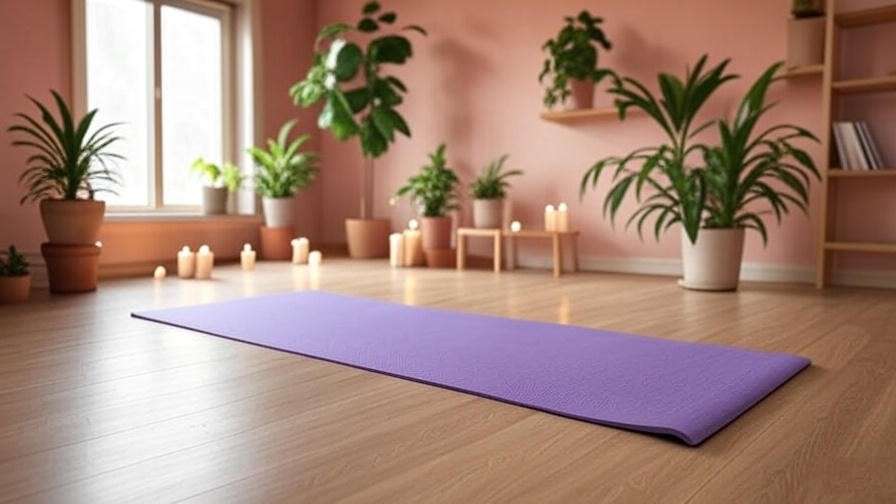
Creating a calming environment is key to a successful meditation and yoga practice. You don’t need a fancy studio—just a quiet corner where you feel at ease. Here are some tips to set up your space:
- Choose a Quiet Spot: Pick a place with minimal distractions, like a bedroom or living room corner. If noise is an issue, use earplugs or play soft instrumental music.
- Add Comfort: Use a yoga mat, cushion, or folded blanket for support during poses or meditation. A bolster can enhance restorative yoga poses.
- Incorporate Calming Elements: Light a candle, use essential oils like lavender, or place a plant nearby to create a serene vibe.
- Keep It Portable: The PDF guide is designed for flexibility, so you can practice at home, in a park, or even at the office during a break.
The guide includes a checklist for setting up your space, ensuring you’re ready to dive into your practice with ease.
Integrating the Guide into Your Daily Routine
Consistency is the secret to reaping the benefits of meditation and yoga. The PDF guide offers flexible routines to fit your schedule, whether you’re a busy parent, professional, or student. Here’s how to make it work:
- Morning Ritual (10-15 minutes): Start your day with a 5-minute mindfulness meditation followed by a gentle yoga flow to boost energy and focus.
- Lunch-Break Reset (10 minutes): Use a quick body scan meditation or seated yoga stretches to relieve midday stress.
- Evening Wind-Down (15-20 minutes): Combine restorative yoga poses like Child’s Pose with a guided loving-kindness meditation to prepare for restful sleep.
A sample weekly schedule in the PDF guide helps you plan sessions, with options for 5-, 10-, or 20-minute practices. As a mindfulness coach, I’ve seen clients transform their stress levels by committing to just 10 minutes daily—small steps lead to big results.
Tracking Your Progress
Monitoring your progress keeps you motivated and helps you see tangible improvements. The PDF guide includes a printable progress tracker to log your sessions, mood, and physical changes. Here’s how to track effectively:
- Journal Your Experience: After each session, note how you feel—calmer, more focused, or less tense. Over time, you’ll notice patterns, like better sleep after evening yoga.
- Use Apps for Support: Free apps like Insight Timer or MyFitnessPal can complement the guide by tracking meditation streaks or yoga minutes.
- Celebrate Milestones: Reward yourself after a week of consistent practice, perhaps with a relaxing bath or a new yoga prop.
Tracking progress reinforces the habit and highlights the benefits, making it easier to stick with your practice long-term.
The Holistic Benefits of Combining Meditation and Yoga
Mental Health Benefits
Meditation and yoga are powerful tools for mental well-being. A 2019 study from Harvard Medical School showed that mindfulness practices reduce anxiety symptoms by 30% in just eight weeks. Yoga, meanwhile, boosts GABA levels (a neurotransmitter linked to calm) by up to 27%, according to a 2021 Journal of Alternative and Complementary Medicine study. Together, they enhance focus, reduce racing thoughts, and improve emotional regulation.
For example, one of my clients, a busy nurse, used the PDF guide’s 10-minute mindfulness meditation to manage work-related stress. Within a month, she reported feeling more grounded and less reactive to daily challenges. These practices rewire the brain for resilience, making them ideal for anyone navigating high-pressure environments.
Physical Health Benefits
Yoga’s physical benefits go beyond flexibility. A 2020 American Heart Association study found that regular yoga practice lowers blood pressure and improves heart health. Meditation complements this by reducing stress-induced inflammation. Together, they improve posture, reduce muscle tension, and enhance sleep quality.

The PDF guide includes poses like Downward Dog to strengthen core muscles and Savasana to promote deep relaxation. For those with chronic pain, gentle modifications (e.g., chair yoga) make the practice accessible. Over time, you’ll notice less physical tension and more energy for daily tasks.
Spiritual and Emotional Growth
Beyond the physical and mental, meditation and yoga foster a deeper connection to yourself. Mindfulness meditation encourages self-awareness, helping you identify and process emotions. Yoga, with its focus on breath and movement, creates a sense of unity between body and mind. Many practitioners report feeling more grounded and purposeful after consistent practice.
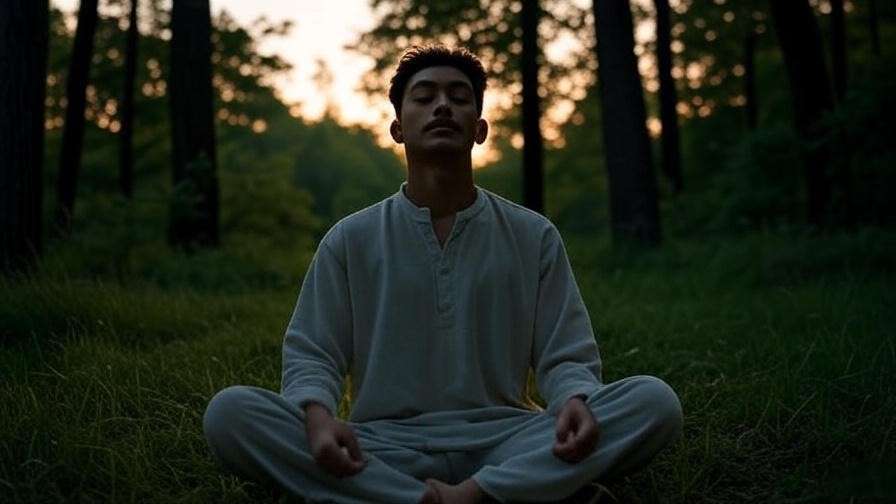
In the words of a holistic wellness expert I’ve collaborated with, “Meditation and yoga are like a daily reset for the soul—they help you reconnect with what truly matters.” The PDF guide includes guided visualizations to deepen this spiritual connection, making it a tool for both practical and profound growth.
Expert Tips for Maximizing Your Practice
To elevate your meditation and yoga practice, try these expert-backed strategies:
- Incorporate Guided Visualizations: Visualize a peaceful scene (e.g., a beach or forest) during meditation to deepen relaxation. The PDF guide includes a script for this.
- Use Mantra Meditation: Repeat a phrase like “I am calm” to anchor your focus. The guide offers a list of mantras for different intentions.
- Try Restorative Yoga: Hold poses like Supported Bridge for 5 minutes to release deep tension. The guide details restorative sequences for ultimate relaxation.
- Avoid Burnout: Start small and increase session length gradually. As a yoga instructor, I recommend practicing 3-4 times a week to build a sustainable habit.
The PDF guide curates these tips into actionable steps, ensuring you get the most out of every session.
Frequently Asked Questions (FAQs)
What is the best time to practice meditation and yoga?
Morning sessions energize you for the day, while evening practices promote relaxation and better sleep. The PDF guide offers routines for both, so you can choose what fits your lifestyle.
Do I need prior experience to use the PDF guide?
No! The guide is designed for all levels, with clear instructions and modifications for beginners. It’s perfect for those new to mindfulness or yoga.
How long will it take to see results?
Many notice reduced stress within 2-4 weeks of consistent practice. The guide’s progress tracker helps you monitor improvements in mood, sleep, and energy.
Can I use the guide if I have physical limitations?
Absolutely. The guide includes chair yoga and gentle modifications to accommodate injuries or mobility issues, ensuring everyone can participate.
Where can I download the meditation and yoga PDF guide?
Visit [Your Website Link] to download your free guide and start your journey to inner peace today.
Conclusion
Meditation and yoga are more than practices—they’re pathways to a calmer, healthier, and more balanced life. Our Meditation and Yoga PDF Guide makes these benefits accessible with expert-designed routines, visual aids, and customizable plans. Whether you’re seeking stress relief, better sleep, or emotional clarity, this guide empowers you to take charge of your well-being. Download it today to start your journey to inner peace, and explore our website for more tips on sleep, happiness, and holistic wellness. Your calmer, more vibrant self is just a few breaths away.
